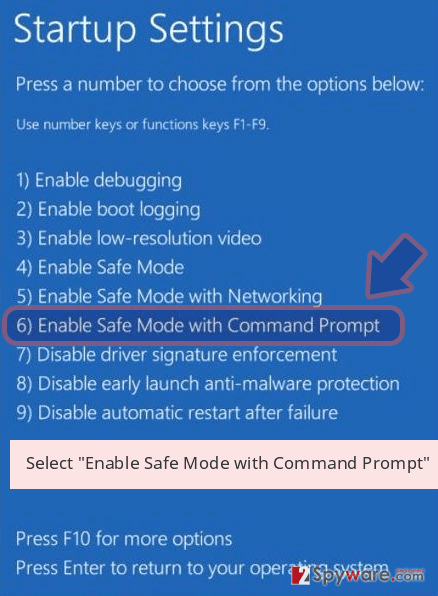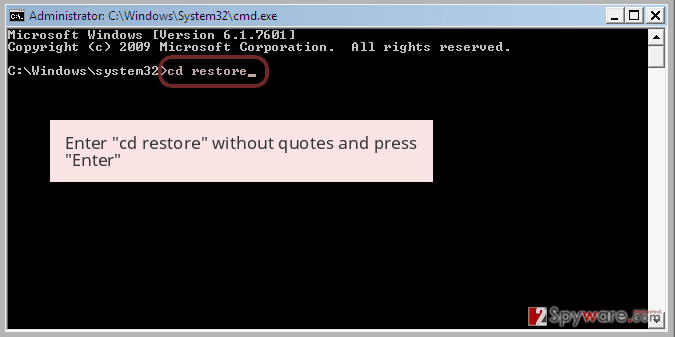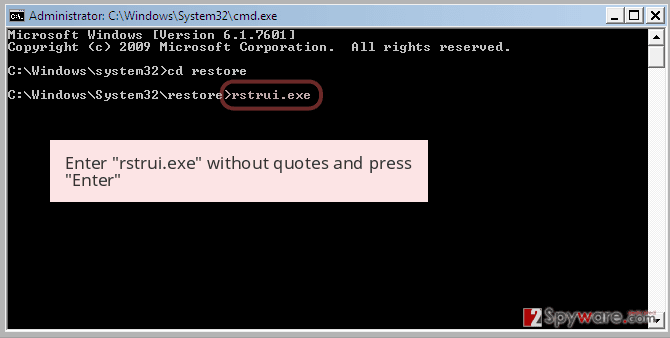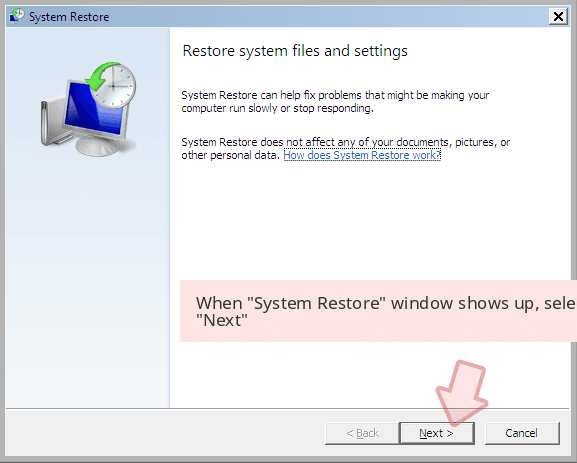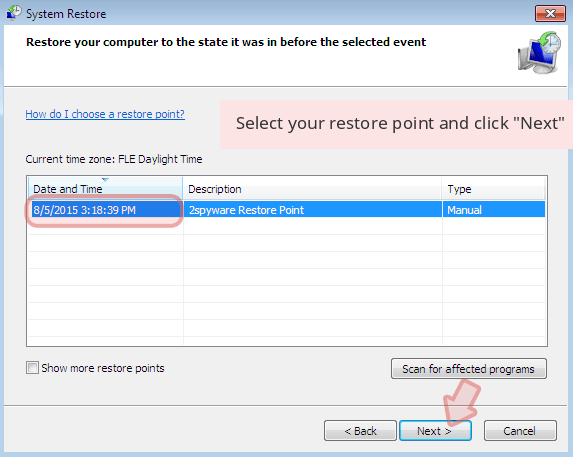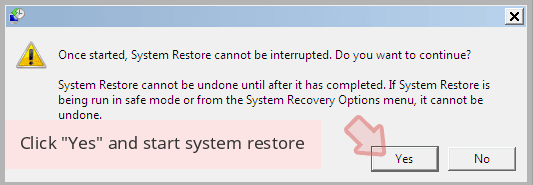Padlock ransomware / virus (Removal Instructions) - Recovery Instructions Included
Padlock virus Removal Guide
What is Padlock ransomware virus?
How dangerous is Padlock ransomware?
Padlock ransomware is not a typical file-encrypting and ransom-demanding virus. It is a screenlocker that seeks to mislead people into thinking that their files are lost for good and that their computer is damaged. Fortunately, this virus seeks to look more dangerous than it is actually is. In reality, it relies on a Trojan horse[1] which does not delete your files, but locks them with a help of a simple screen lock functionality. Typically, it disables the keyboard shortcuts, Windows tools and similar features. Once it finishes that, Padlock screenlocker shows a message with a padlock picture claiming “YOUR FILES HAVE BEEN DELETED & YOUR PC HAS BEEN LOCKED!!!” However, when infected with this virus, you can be sure that your files are safe. The only thing you need to do is to unlock your computer with the special code and remove PadLock virus with all its files. At the moment, the code that you need to enter to get rid of this ransomware is ajVr/G\RJz0R. However, if this code does not work, try to reboot your computer to Safe Mode with networking or System Restore first. Besides, you can also disable padlock.exe process in your Task Manager. Once you disable the virus, don’t forget to remove malicious files from the system to prevent additional problems on your machine. For that, use FortectIntego.
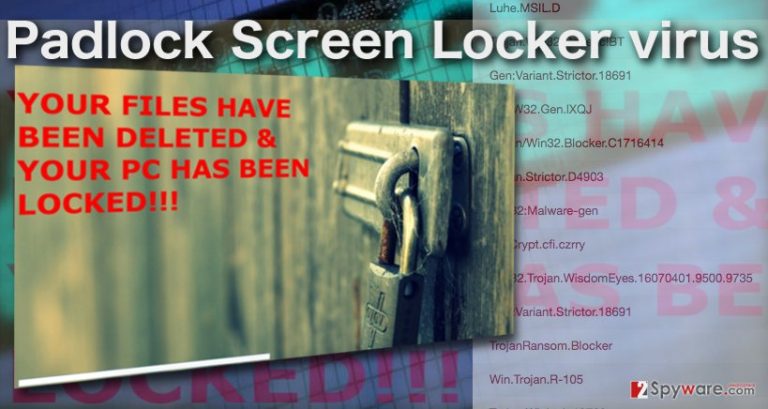
PadLock Screenlocker seems to be identical to Cryptoblock, MagicMinecraft Screenlocker, and other screenlockers that try to pretend to be ransomware-type viruses. In reality, they don’t use encryption[2] and similar techniques on victims’ computers. Besides, they do not change extensions of your files and drop the ransom note on your computer’s screen informing you about the needed ransom and the time that you have to pay it. They only rely on social engineering tactics used to scare PC users and extort their money.[3] So, PadLock is just another example showing that you should never follow the commands of cyber criminals and pay them your money. If you are dealing with a real ransomware virus, you should know that making the payment to cyber criminals does not guarantee that you will get your files back to you.[4] You should always take care of ransomware removal first and then look for decrypters presented by computer experts. In this case, use a code given above to recover the connection to your computer and initiate PadLock virus removal on your computer without wasting your time.
How can I get infected?
You can get infected with PadLock screenlocker thru infected software packages. Typically, such infected downloads can be found on illegal websites, such as sites filled with adult content, torrent sites and similar domains. Also, you can get infected after falling for fake updates of Google Chrome, Internet Explorer, Mozilla Firefox and other web browsers. Keep in mind that such updates should be downloaded only from official websites that are related to your web browser. Scammers have been actively pushing fake updates as chrome-update.bat and similar files filed with malware,[1] such as ransomware, browser hijackers and similar PUPs.[5] Finally, make sure you avoid spam. No matter how tempting such emails look, they can easily be used for infecting your system. Once you receive an email from the person that you don’t know, check the sender, the message body and similar things that could reveal that you are dealing with scammers.
How can I remove PadLock virus from the system?
If infected with PadLock ransomware, you should stop thinking that you won’t get your files back to you. In reality, this virus is just a simple screenlocker that seeks to scare you into thinking that you need to pay a ransom. In reality, you just need to enter a special code found by security experts and remove PadLock screenlocker from your computer. Otherwise, you can run into following problems, such as the appearance of other viruses, the loss of additional files, etc. Fortunately, this malware does not modify your files extensions, so virus removal should make them available again. The code that you need to enter to start PadLock removal is ajVr/G\RJz0R. If the code does not work, you should try rebooting your computer to Safe Mode with Networking and entering this code again. Another way to get rid of this ransomware is to launch Task Manager and disable padlock.exe process running there. To reboot your computer into Safe Mode and complete Padlock virus removal, follow the steps below.
Getting rid of Padlock virus. Follow these steps
Manual removal using Safe Mode
If PadLock virus is blocking you and the code given above does not work, you need to reboot your computer to Safe Mode with Networking first. Once you finish the steps given below, make sure you enter ajVr/G\RJz0R.
Important! →
Manual removal guide might be too complicated for regular computer users. It requires advanced IT knowledge to be performed correctly (if vital system files are removed or damaged, it might result in full Windows compromise), and it also might take hours to complete. Therefore, we highly advise using the automatic method provided above instead.
Step 1. Access Safe Mode with Networking
Manual malware removal should be best performed in the Safe Mode environment.
Windows 7 / Vista / XP
- Click Start > Shutdown > Restart > OK.
- When your computer becomes active, start pressing F8 button (if that does not work, try F2, F12, Del, etc. – it all depends on your motherboard model) multiple times until you see the Advanced Boot Options window.
- Select Safe Mode with Networking from the list.
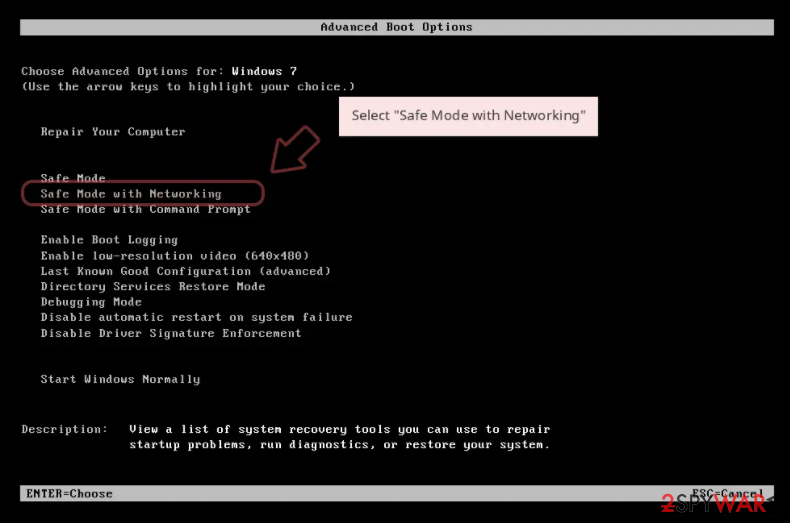
Windows 10 / Windows 8
- Right-click on Start button and select Settings.
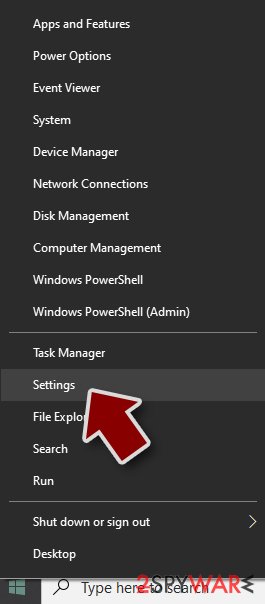
- Scroll down to pick Update & Security.
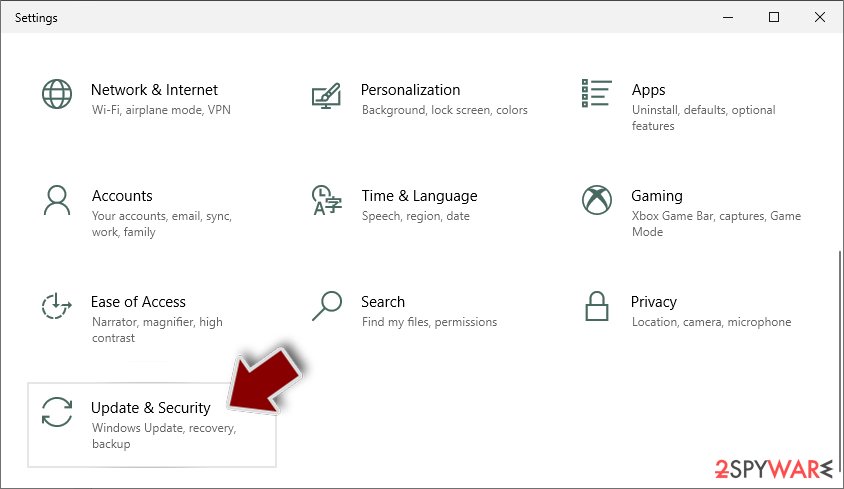
- On the left side of the window, pick Recovery.
- Now scroll down to find Advanced Startup section.
- Click Restart now.
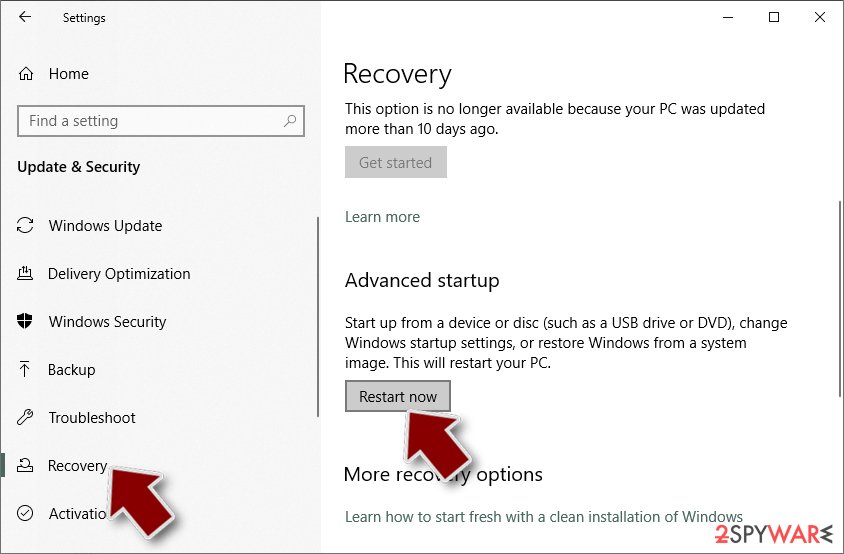
- Select Troubleshoot.
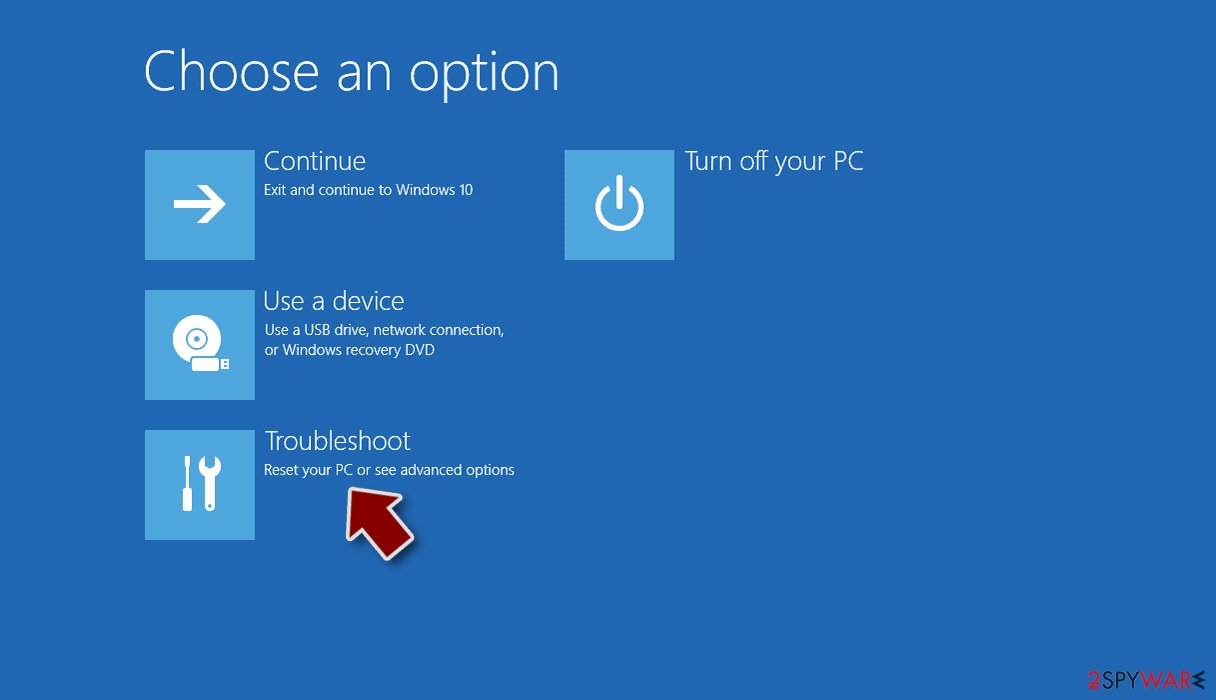
- Go to Advanced options.
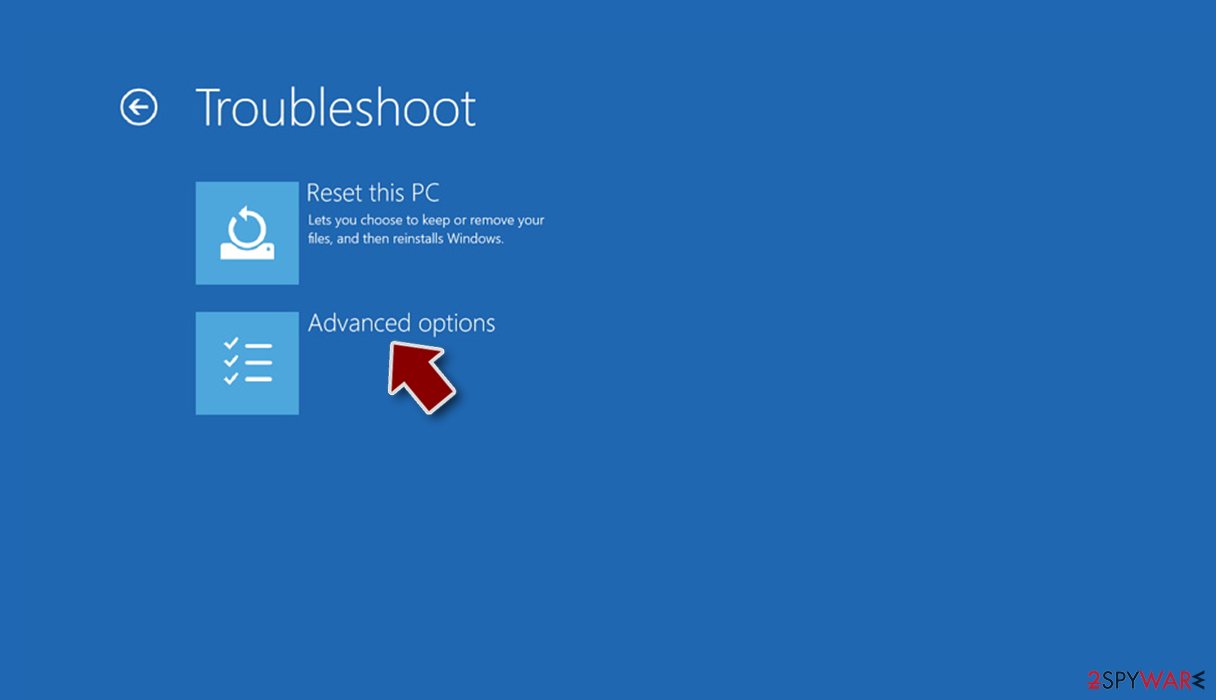
- Select Startup Settings.
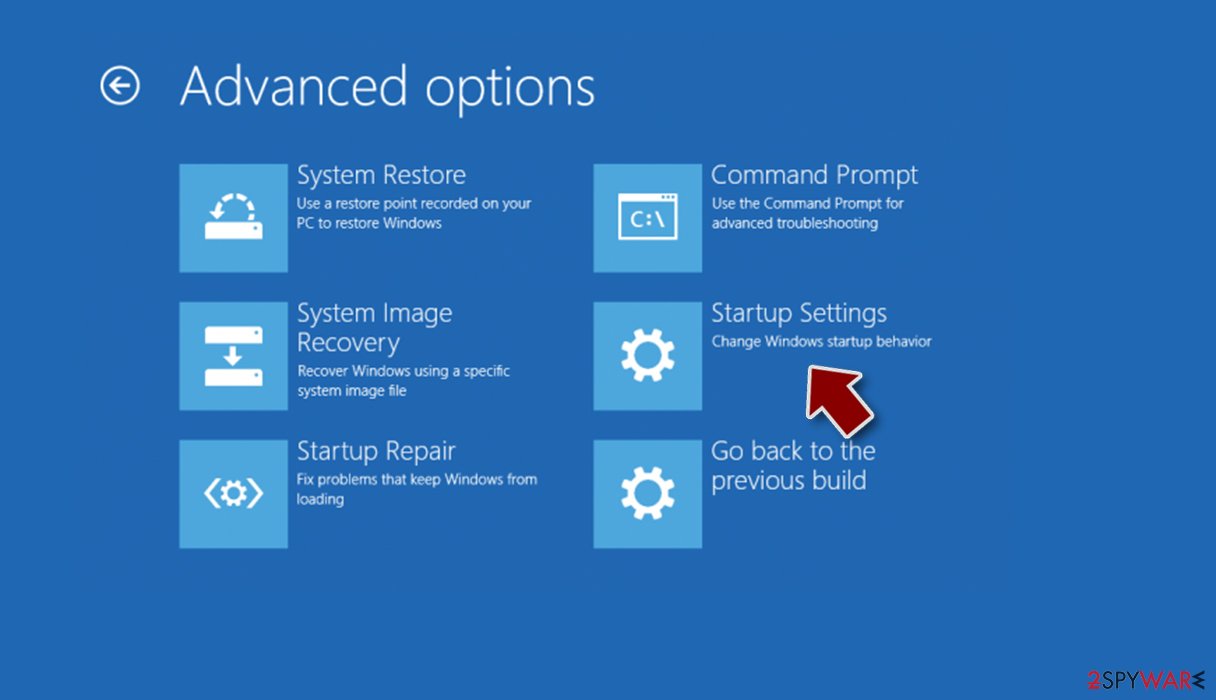
- Press Restart.
- Now press 5 or click 5) Enable Safe Mode with Networking.
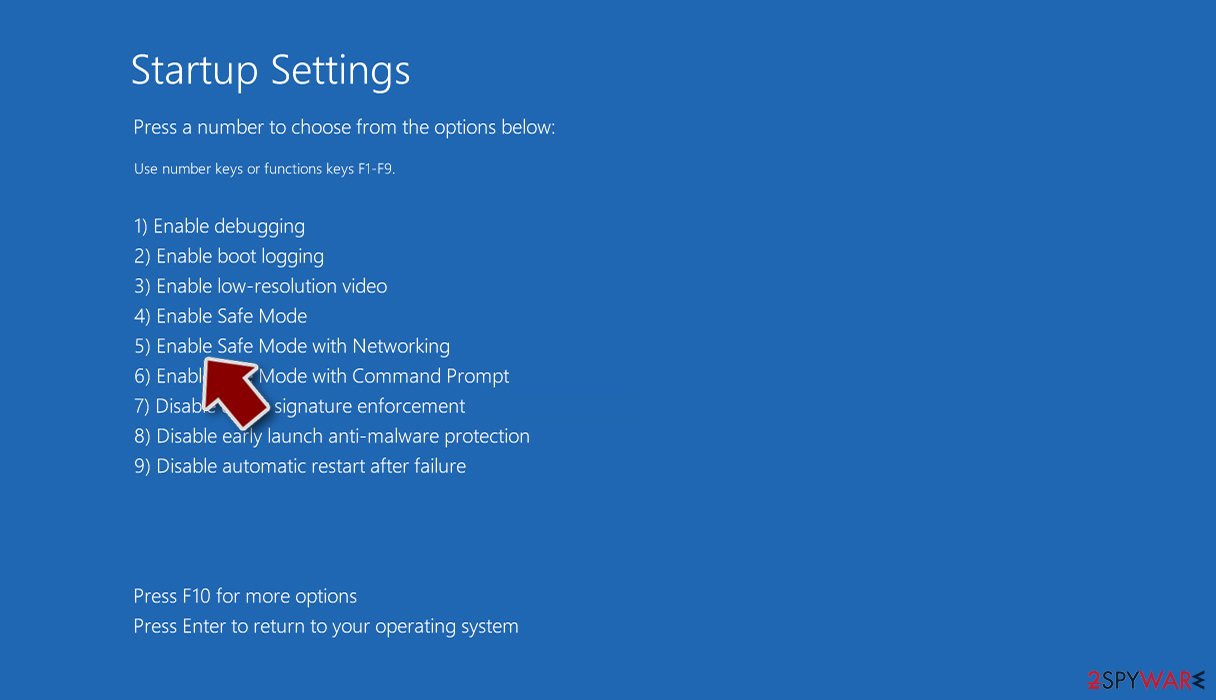
Step 2. Shut down suspicious processes
Windows Task Manager is a useful tool that shows all the processes running in the background. If malware is running a process, you need to shut it down:
- Press Ctrl + Shift + Esc on your keyboard to open Windows Task Manager.
- Click on More details.
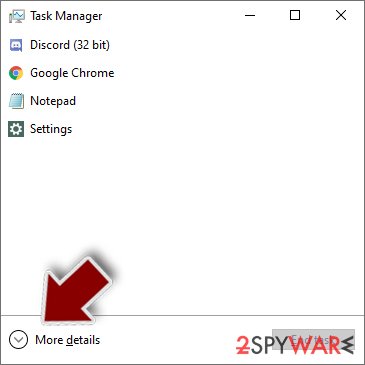
- Scroll down to Background processes section, and look for anything suspicious.
- Right-click and select Open file location.
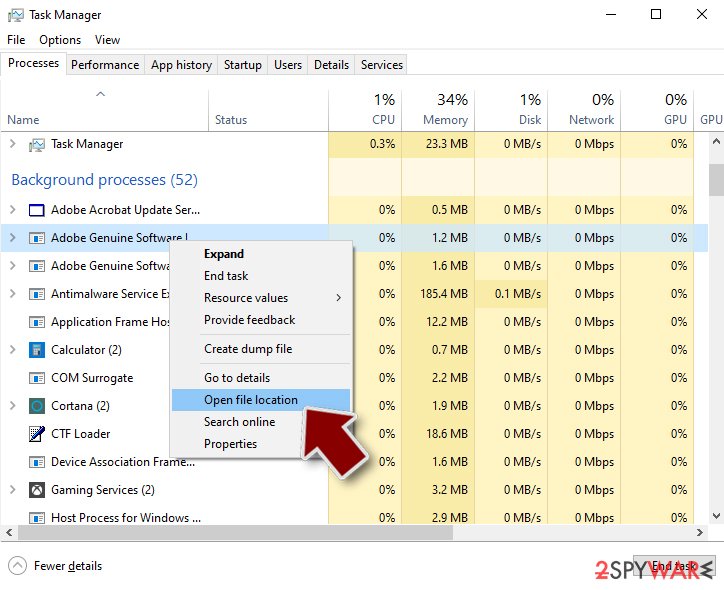
- Go back to the process, right-click and pick End Task.
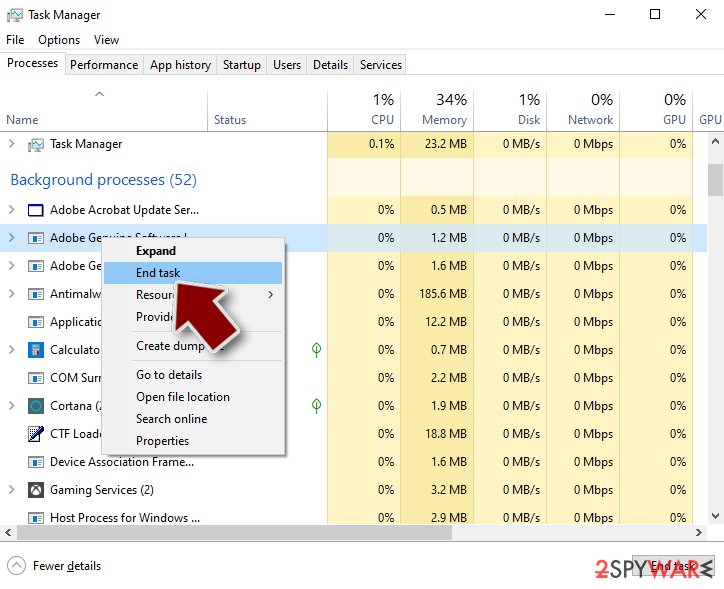
- Delete the contents of the malicious folder.
Step 3. Check program Startup
- Press Ctrl + Shift + Esc on your keyboard to open Windows Task Manager.
- Go to Startup tab.
- Right-click on the suspicious program and pick Disable.
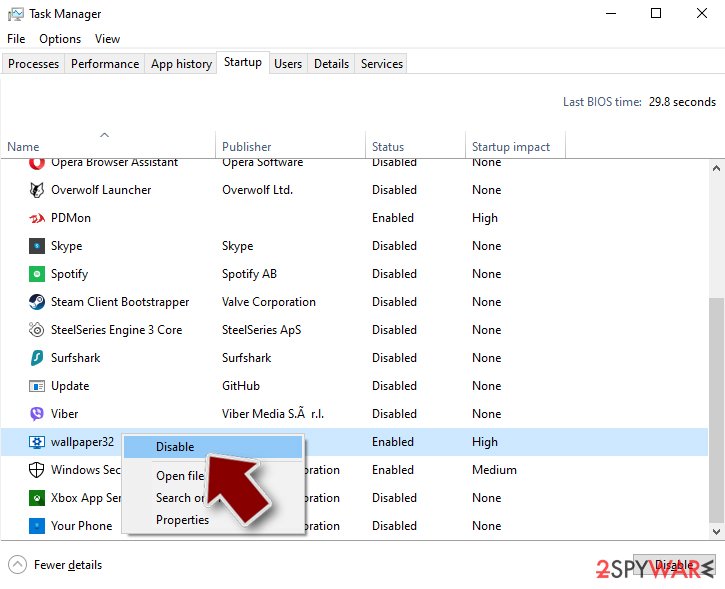
Step 4. Delete virus files
Malware-related files can be found in various places within your computer. Here are instructions that could help you find them:
- Type in Disk Cleanup in Windows search and press Enter.
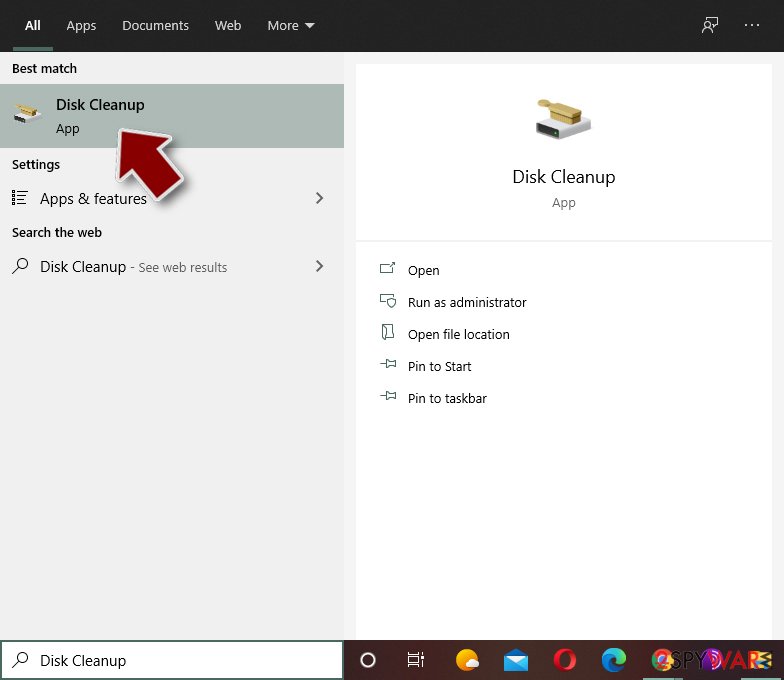
- Select the drive you want to clean (C: is your main drive by default and is likely to be the one that has malicious files in).
- Scroll through the Files to delete list and select the following:
Temporary Internet Files
Downloads
Recycle Bin
Temporary files - Pick Clean up system files.
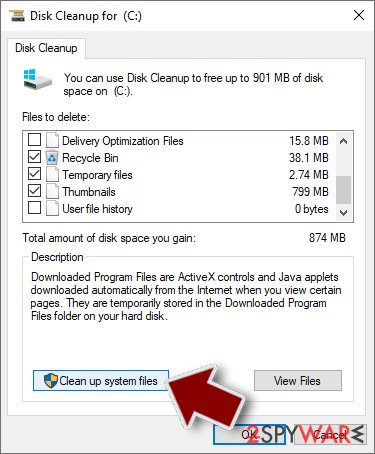
- You can also look for other malicious files hidden in the following folders (type these entries in Windows Search and press Enter):
%AppData%
%LocalAppData%
%ProgramData%
%WinDir%
After you are finished, reboot the PC in normal mode.
Remove Padlock using System Restore
If rebooting to Safe Mode does not help you disable PadLock virus, you can also try System Restore. Once you finish the steps given below, make sure you enter the special code: ajVr/G\RJz0R.
-
Step 1: Reboot your computer to Safe Mode with Command Prompt
Windows 7 / Vista / XP- Click Start → Shutdown → Restart → OK.
- When your computer becomes active, start pressing F8 multiple times until you see the Advanced Boot Options window.
-
Select Command Prompt from the list

Windows 10 / Windows 8- Press the Power button at the Windows login screen. Now press and hold Shift, which is on your keyboard, and click Restart..
- Now select Troubleshoot → Advanced options → Startup Settings and finally press Restart.
-
Once your computer becomes active, select Enable Safe Mode with Command Prompt in Startup Settings window.

-
Step 2: Restore your system files and settings
-
Once the Command Prompt window shows up, enter cd restore and click Enter.

-
Now type rstrui.exe and press Enter again..

-
When a new window shows up, click Next and select your restore point that is prior the infiltration of Padlock. After doing that, click Next.


-
Now click Yes to start system restore.

-
Once the Command Prompt window shows up, enter cd restore and click Enter.
Finally, you should always think about the protection of crypto-ransomwares. In order to protect your computer from Padlock and other ransomwares, use a reputable anti-spyware, such as FortectIntego, SpyHunter 5Combo Cleaner or Malwarebytes
How to prevent from getting ransomware
Choose a proper web browser and improve your safety with a VPN tool
Online spying has got momentum in recent years and people are getting more and more interested in how to protect their privacy online. One of the basic means to add a layer of security – choose the most private and secure web browser. Although web browsers can't grant full privacy protection and security, some of them are much better at sandboxing, HTTPS upgrading, active content blocking, tracking blocking, phishing protection, and similar privacy-oriented features. However, if you want true anonymity, we suggest you employ a powerful Private Internet Access VPN – it can encrypt all the traffic that comes and goes out of your computer, preventing tracking completely.
Lost your files? Use data recovery software
While some files located on any computer are replaceable or useless, others can be extremely valuable. Family photos, work documents, school projects – these are types of files that we don't want to lose. Unfortunately, there are many ways how unexpected data loss can occur: power cuts, Blue Screen of Death errors, hardware failures, crypto-malware attack, or even accidental deletion.
To ensure that all the files remain intact, you should prepare regular data backups. You can choose cloud-based or physical copies you could restore from later in case of a disaster. If your backups were lost as well or you never bothered to prepare any, Data Recovery Pro can be your only hope to retrieve your invaluable files.
- ^ What are trojans and how to remove them. 2spyware. Security news and virus removal guides.
- ^ What is encryption?. Wikipedia, the free encyclopedia.
- ^ Social Engineering FAQ. Webroot blog.
- ^ Hospital learns the hard way why you don’t pay ransomware crooks. Kaspersky Lab Daily.
- ^ PSA: Fake Urgent Chrome Update making rounds, do not open Chrome-update.bat file. TechDows. A place on the web, where you can find latest technology news, updates and various Windows tips and tricks.

